Water scarcity is becoming an increasingly pressing concern across India, especially in urban and semi-urban regions. Rainwater harvesting (RWH) is a sustainable solution to address this issue by collecting and storing rainwater for future use. In 2025, the Indian government continues to support this eco-friendly initiative through various subsidies, making it easier for homeowners, farmers, and institutions to adopt rainwater collecting systems.
If you’re looking to set up an RWH system, knowing how to apply for government rainwater harvesting subsidies in 2025 can save you costs and ensure compliance with local regulations.
Understanding Rainwater Harvesting and Its Benefits
Rainwater harvesting involves collecting rainwater from roofs, pavements, or other surfaces and storing it for later use. This method reduces dependence on municipal water supply, recharges groundwater, and helps in water conservation. Installing a proper rainwater filter system is essential to ensure the collected water is clean and safe for household, agricultural, or industrial use.
Benefits of rainwater collecting:
-
Reduces water bills and dependency on public water systems.
-
Helps combat water scarcity during dry seasons.
-
Recharges groundwater and prevents urban flooding.
-
Supports sustainable and eco-friendly living.
Government Rainwater Harvesting Subsidies in India
To encourage widespread adoption of RWH, the government provides financial support through rainwater harvesting schemes in India. These subsidies make it affordable for individuals and institutions to implement RWH systems.
Central Government Initiatives
-
Jal Shakti Abhiyan 2.0
The initiative focuses on water conservation in water-stressed districts. It provides financial assistance and technical support for RWH projects. -
Ground Water Management and Regulation (GWMR) Scheme
Managed by the Central Ground Water Board (CGWB), this scheme assists state governments in promoting water conservation projects, including rainwater collecting.
State-Specific Subsidies
-
Karnataka
The state offers Government rainwater harvesting subsidies in Karnataka for both residential and agricultural rainwater collecting. Under schemes like the Krishi Bhagya Scheme, farmers receive assistance for rainwater storage units. -
For more details, check the CHHATA Scheme.
-
Rajasthan
Farmers can receive up to ₹1.35 lakh under the Farm Pond Scheme, with 70% covered by the government and 30% by the farmer. SC/ST farmers often receive higher subsidies. -
Uttar Pradesh
The ‘Per Drop More Crop’ scheme provides ₹52,000 subsidy to farmers constructing farm ponds. It focuses on drought mitigation and irrigation efficiency.
These schemes vary by state, so it’s important to check your local government portal for the most accurate details.
Step-by-Step Guide to Applying for Subsidies
1. Check Eligibility
Eligibility varies depending on the scheme and the purpose of the RWH system (residential, agricultural, industrial). Typically, eligibility is determined by:
-
Land ownership proof.
-
Type of RWH system.
-
Compliance with local regulations.
2. Gather Required Documents
A complete application requires:
-
Identity and address proof.
-
Land ownership documents.
-
Site photographs.
-
Estimates or invoices for the RWH system.
-
Udyam Registration for MSMEs (if applicable).
Ensuring all documents are correct prevents delays in subsidy approval.
3. Submit Your Application
Applications can often be submitted online through the respective state government portal or offline at designated offices. Check the official website for your state’s water conservation department.
4. Install the System
After your application is approved, install your rainwater collection system. This could involve rainwater filter systems, storage tanks, and piping. Using high-quality systems like Rainy Filter FL 80 ensures efficient water filtration and durability.
5. Inspection and Verification
Government officials may conduct a site inspection to verify installation and compliance with guidelines. Proper installation is crucial for claiming the subsidy successfully.
6. Claim the Subsidy
Submit proof of installation, invoices, and any inspection reports to claim the financial assistance. The subsidy is generally disbursed directly to your bank account.
Importance of a High-Quality Rainwater Filter System
Rainwater harvesting filters is essential to remove debris, leaves, and other contaminants from harvested water. Quality filtration ensures water safety for household, agricultural, or industrial use.
Recommended Products and Accessories:
-
Rainy Filter FL 80 – Efficient filtration, long-lasting, and easy to maintain.
-
Rainwater Filter Accessories – Ensure proper maintenance and optimal performance.
-
Rainwater Harvesting Filter Types – Choose according to your usage, from household to large-scale industrial systems.
Using these systems not only improves water quality but also increases the longevity of your rainwater collecting setup.
Claim Your Government Rainwater Subsidy Today
Applying for government rainwater harvesting subsidies in 2025 is a practical way to adopt sustainable water practices while reducing costs. Whether you are a homeowner, farmer, or business, following the correct application process ensures financial support and compliance with regulations. Integrating a high-quality rainwater filter system enhances water safety, making your RWH system efficient and reliable.
Taking advantage of these subsidies not only benefits you but also contributes to environmental conservation and sustainable water management. Start your application today and join the movement towards water sustainability in India.
Key Considerations Before Applying
-
Local Regulations – Always check municipal or state regulations for rainwater collecting. Some areas mandate RWH for new constructions.
-
System Size – Determine the capacity needed based on roof size, rainfall, and intended use.
-
Maintenance – Regularly clean filters, tanks, and pipes to maintain efficiency.
-
Integration – RWH can be combined with rooftop gardens or irrigation systems for added benefits.
-
Documentation – Maintain records of installation, inspection, and invoices for subsidy claims.
FAQs:
1. Who is eligible for government rainwater harvesting subsidies?
Eligibility depends on land ownership, RWH system type, and local government regulations. Both residential and agricultural users may qualify.
2. How much subsidy can I get?
Subsidy amounts vary by state and scheme. For example, Rajasthan farmers can get up to ₹1.35 lakh, while Uttar Pradesh offers ₹52,000 for farm pond construction.
3. Can I apply for subsidies online?
Yes, most states provide online portals for submitting applications. Offline submission is also possible in some areas.
4. Do I need a specific rainwater filter system?
Using a high-quality rainwater filter system is recommended to ensure safe and clean water. Systems like Rainy Filter FL 80 are ideal for residential and industrial use.
5. What documents are required for applying?
Common documents include identity proof, land ownership proof, site photographs, system invoices, and Udyam registration (for MSMEs).

